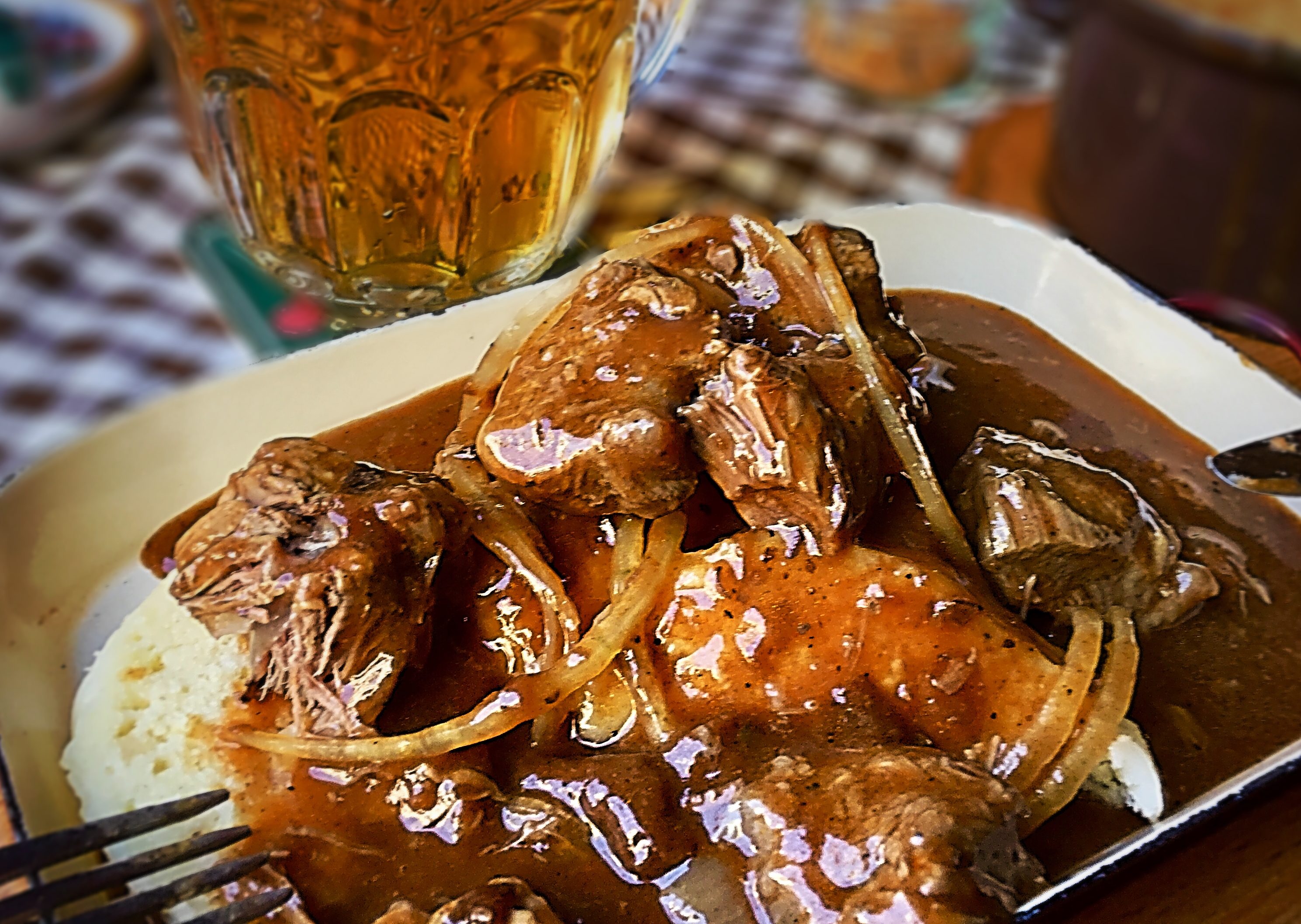Goulash is a saucy, rich soup-like dish made out of meat and vegetables, seasoned with paprika and other spices. Its origins can be traced to medieval Hungary – to about the 9th century – where as a stew, it was eaten by Hungarian shepherds. Some speculate that the Hungarians adopted the dish from the Turkish. It is understood that earlier versions of goulash did not include paprika, as it was not introduced to the Old World until the 16th century. Historically, it is one of the national dishes of Hungary and a symbol of the country and culture. Other countries such as the Czech Republic, Slovakia, Austria, Germany and Poland, have their slightly varied version of this succulent dish. That said, this hearty, home-cooked meal, crosses borders and oceans, and sheer variations such as Irish stews, and “estofado” in Latin America.
Goulash can be prepared from beef, veal, pork, or lamb. Typical cuts include the shank, shin, or shoulder; as a result, goulash derives its thickness from tough, well-exercised muscles rich in collagen, which is converted to gelatin during the cooking process. The meat is cut into chunks, seasoned with salt, and then browned with sliced onions in a pot with oil or lard. Paprika is added, along with water or stock, and the goulash is left to simmer. After cooking a while, garlic, whole or ground caraway seed, or soup vegetables like carrot, parsley root, peppers (green or bell pepper) and celery may be added. Other herbs and spices could also be added, especially chili pepper, bay leaf and thyme. Diced potatoes may be added, since they provide starch as they cook, which makes the goulash thicker and smoother.
One standout version of goulash is what is known as Prague goulash. The meal, in it self, has a special place in the hearts and minds of Czechs, despite not originating there. It is speculated that it was popularized in the early 1900’s, though, the influence in cuisine and culture during the Austro-Hungarian Empire is undeniable. Nevertheless, since the early 20th century, this classic meat dish has become a staple of both home cooking and restaurant menus across the Czech Republic.
The main ingredients come down to a balance of quality meat and onion, and of course, the right seasoning. At its core are several hours of stewing on the stove-top. Most popular versions include the traditional beef, or pork , though several exotic version made of wild boar or venison can be experienced in this country. This goulash is served with a Czech bread dumpling called Houskový Knedlík.
Ingredients
- 3 lb beef (cut into large cubes)
- 6 onions , sliced
- 3 ripe tomatoes, peeled, seeded and crushed
- 6 tablespoons vegetable oil or lard, or a combination of both
- 2 1/2 tablespoons flour
- 5 tablespoons paprika
- 1 tablespoon marjoram
- 1 teaspoon caraway seeds
- ½ tsp black pepper
- 4 whole allspice berries (nové koření)
- 1 red hot pepper, finely diced (optional)
- 2 cups beef or vegetable broth
- Salt
-
Heat the oil or lard on medium heat and brown the meat on all sides for a few minutes.
-
Add onions, mix well and cook for 5 minutes over medium-high heat, stirring constantly.
-
Add tomatoes, hot pepper (optional), allspice, paprika and caraway. Mix well.
-
Cover with hot broth and mix well. Season with salt and pepper. Simmer for 2-3 hours over low heat, stirring gently.
-
30 minutes before the end of cooking, add marjoram and flour diluted in a small amount of boiling water. Adjust the seasoning if necessary.
-
Check the tenderness of the meat. Cooking may have to be extended if necessary. If this is the case, adjust the amount of broth accordingly. The sauce should be plentiful and unctuous.
-
Serve hot with fresh bread dumplings, Czech style (Houskový Knedlík), as well as sliced scallions.

